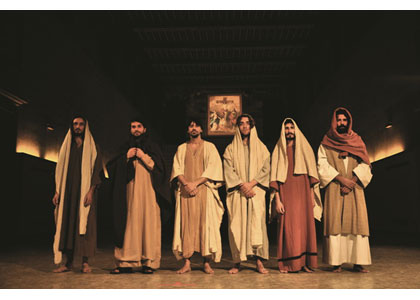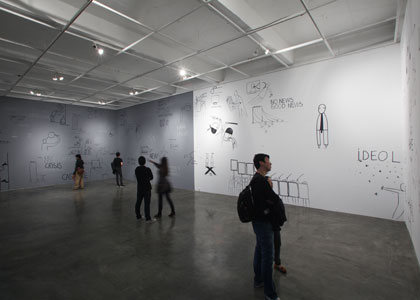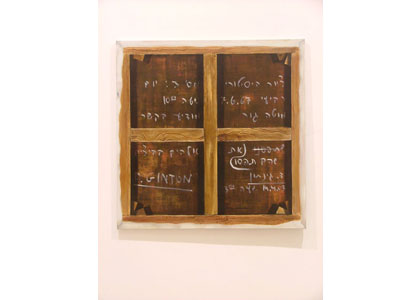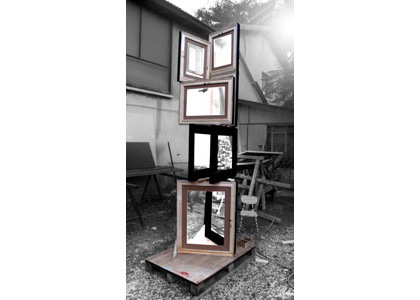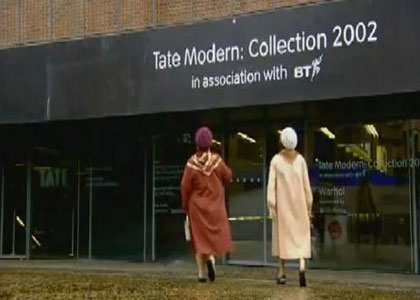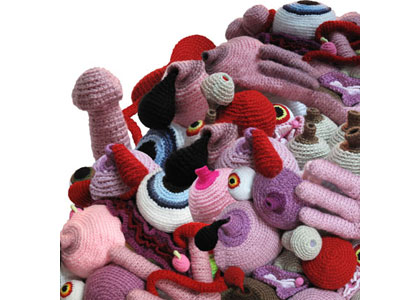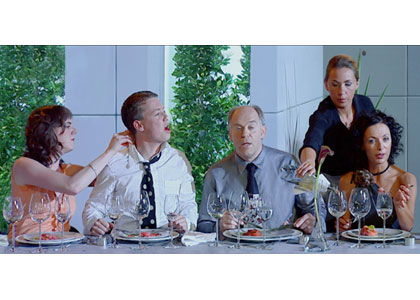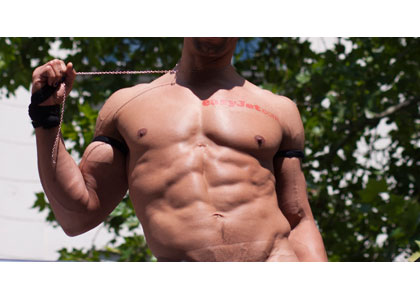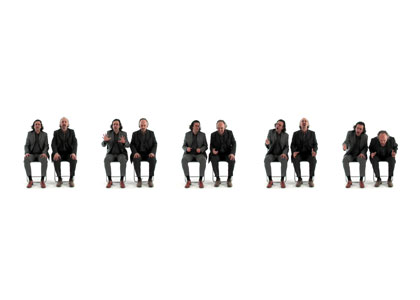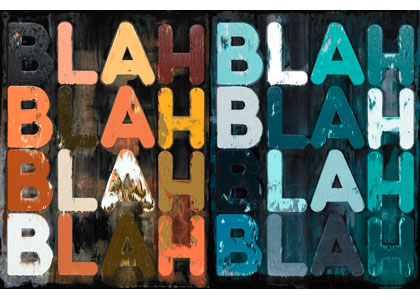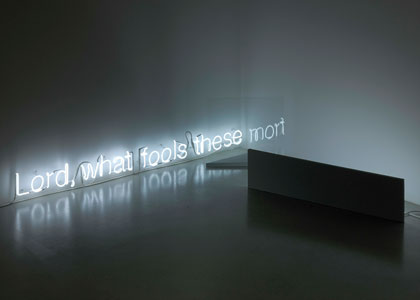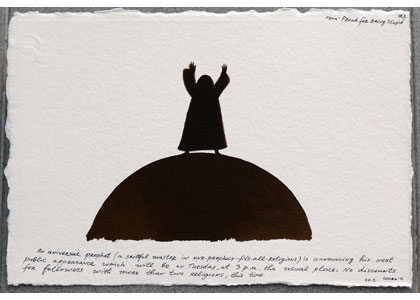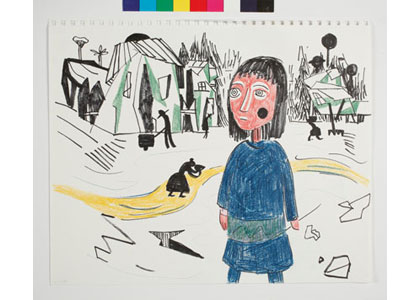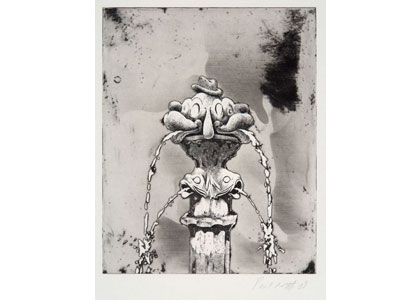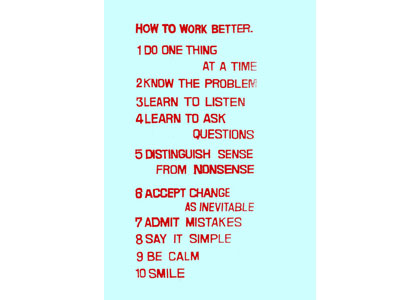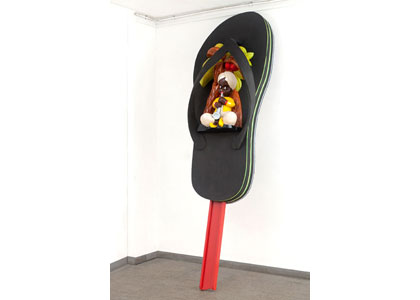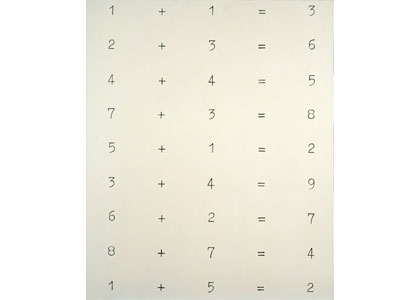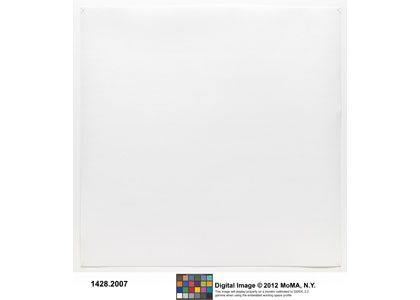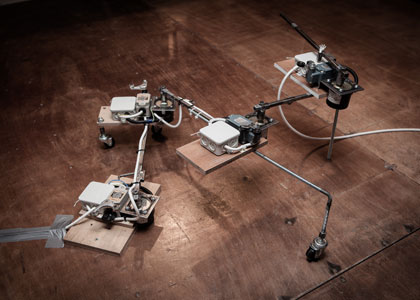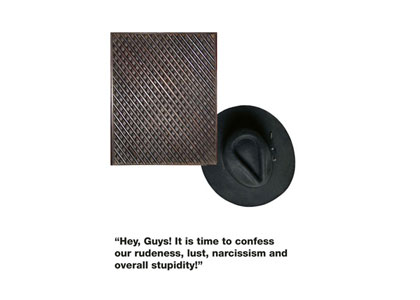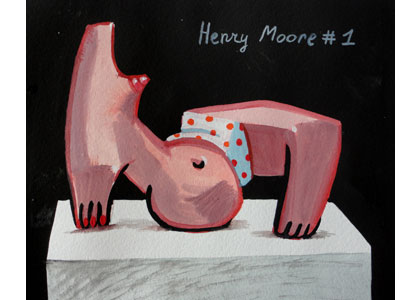
Albert Einstein once said: “Only two things are infinite: the universe and human stupidity, and I’m not sure about the former.” This exhibition might be a testimonial to his insight: stupidity has such an evasive character that to illuminate or define it with visual means equates the heroics of suicidal tendencies, culminating in glorious failure.
Furthermore, the line between criticism (namely, an attack on stupidity via art) and a work that draws on the well of stupidity and stems from a void where knowledge is excluded as a precondition for a truly brilliant originality—that line is so thin and fuzzy that it boggles the mind in coming to terms with the very existence of stupidity. That stupidity is enjoying a comeback as a virtue, shedding its negative aura, is evinced by many examples, such as the Diesel campaign, a corporation manufacturing wardrobes for hipsters, launched in 2010 under the title “Be Stupid.” Indeed, 2010 became the year in which “smart” lost its allure, and stupidity began to be regarded as an antidote to the malignancy of intelligence.
Stupidity seems to be a quality that we experience or encounter at every point in our lives. In general, it is a characteristic we ascribe to others, and only rarely, in an afterthought, to ourselves. Some cultural constructs—such as bureaucracy, war, racial or religious prejudice—are stupid by their very nature, but not every stupidity is as stupid as it seems.
It can be life saving in many situations, when speaking the truth and following reason may bring upon fall, disgrace, and even loss of one’s own existence.
The most famous remark about stupidity comes from Friedrich Schiller, who asserted in his Maid of Orleans that “against stupidity the gods themselves contend in vain,” not that the gods were spared their share of stupidity, bearing in mind the fanatical approach with which they arm their adherents.
Artists have always been fascinated by the notion of stupidity, because they know that the double face of stupidity—as a prerequisite to the making of a good work, but also as a sorry consequence once it fails—requires a special expertise and a state of alertness. They recognized this evasive quality long ago, and have employed it in their service as well as a target to be resisted. In the fine arts, this double nature of stupidity—as a source of inspiration, being the very first sediment of the artwork, and simultaneously, as a negative quality—finds expression in the works of many.
The exhibition thus explores the urgency of stupidity, its hiding places, as well as its public manifestations, and mainly—its Janus-face. The participating artists transpire in the channels of expression which stupidity provides its researchers. Some of their works offer ironical comments, some are full of rage, and yet others accept stupidity as a fact of life with a stoic shrug.
Participating artists:
Mel Bochner, Köken Ergun, Peter Fischli and David Weiss, Tom Friedman, Christian Jankowski,
Los Torreznos (Rafael Lamata and Jaime Vallaure), Hans Op de Beeck, Nadin Ospina,
Paul McDevitt, Dan Perjovschi, Nedko Solakov, Vadim Zakharov, Sigmar Polke,
French and Saunders, Zoya Cherkassky, Ravit Mishli, Eliezer Sonnenschein,
Uri Katzenstein, Gil Yefman, Miri Segal, David Ginton, Ohad Meromi.
Christian Jankowski
2-channel video projection, 60 min, color, sound, Italian with English subtitles
Taking the form of a televised casting show, like Next Top Model, we see thirteen actors audition for the role of Christ, before a panel of three Vatican men. Not only were the judges authentic, but the actors trying out for the role were also genuine, sourced by agents with the hope of being chosen to play Jesus in a number of further productions. Held in the 1,000-year old Complesso Santo Spirito, originally a hospital, the casting was filmed live and streamed to an audience of 300. “Both the Jesus candidates and the judges wore microphones up during the show. They didn’t realize how clearly they could be heard when they were whispering to each other behind their hands, discussing the appearance and performances of the different Jesuses,” says Jankowski. “When you sit at home watching these shows, you always catch yourself saying ‘oh, she’s so bad’ or ‘look at that’; you always form opinions. But it was something different to hear a group of Vatican officials discussing Jesus’s various good and bad traits.” While the work may have a surface level of humor, it was not Jankowski’s idea to ridicule the Vatican. Rather than poking fun at Catholicism, the film looks at society as a whole and our relationship with this sort of TV show. “The genre of the casting show is a relatively new one. It was really interesting to see how quickly the judges from the Vatican adopted the style needed for the show,” says Jankowski. “We only gave them basic ideas previous to the event; they turned up about 15 minutes before the filming, and knew exactly what to do.”
Hans Op de Beeck, All Together Now..., 2005, video, 6.20 min loop
courtesy of Galleria Continua, San Gimignano, Beijing, and Le Moulin; Galerie Krinzinger, Vienna; Xavier Hufkens, Brussels; Marianne Boesky Gallery, New York; and Galerie Ron Mandos, Rotterdam and Amsterdam
All together now… is a tragicomic portrait of three groups of table companions, portrayed on three different occasions: a group of people in their late seventies at a table set rather soberly with coffee and cake, after a funeral; a wistful bride and her bridegroom with their families in an over-decorated banquet hall; and a birthday dinner for a well-to-do paterfamilias with a trendily designed interior.
These moments around a table may be some of the clearest situations in which people gather together in a more or less artificial manner. Mutual grudges, unspoken feelings, and tensions between family members are hidden between the lines of the ritual. Flemish artist Hans Op de Beeck lets the camera slowly pan once among the people around the table. This six-minute choreography of actions in miniature, conversations and knowing glances, clarifies the relationships around the table. Some of the characters are comic, others rather tragic or touching. Due to the slow-motion technique, every detail becomes outspokenly visible.
Op de Beeck’s work is about the stupidity of an obliged behaviour, doomed to be exercised in all families, under the same rules. As such, All together now… is a contemporary portrait of human behavior under given circumstances, here around the table, in which the sobering, post-party emptiness can be sensed while the feast is still underway.
Los Torreznos (Rafael Lamata and Jaime Vallaure), La Noche Electoral (Election Night), 2007, 2-channel video projection, 26 min
Los Torreznos (Rafael Lamata and Jaime Vallaure) are seated side by side against a white backdrop, broadly gesticulating and shouting names and phrases back and forth in rhythmic, comical crescendo: “Marx!” “Maaao!” “Marx!” “Maaaaaooo!” “Hitler!” “Maaaaaoooo!” “Kropotkin,” thus repeating the names of some key historical figures of the 20th century. Discussing the work they remark: “A lot of rubbish has been said on the subject of political art, and what’s worse, even more rubbish has been produced on the same subject. The very notion of ‘political’ or ‘social’ art pretends to provide a nuance whose absence is impossible. All art is political and social, the question is what exactly its political and social position is. In its genesis, execution and reception, art cannot help being political and social. This piece is centered on power, and the meaning given to names, or the names which endow power with meaning. It is a piece that concentrates on the everyday collective memory of power, and one which consciously avoids the opportunism of the zeitgeist. These are the names of the century, the names of History. We have learnt them day after day. Now, we give them back, in a simple act, not bereft of a certain rhythm.”


